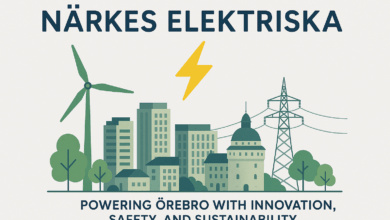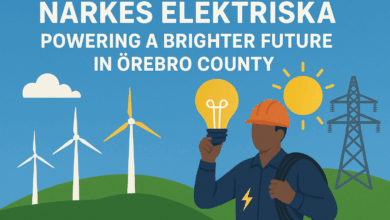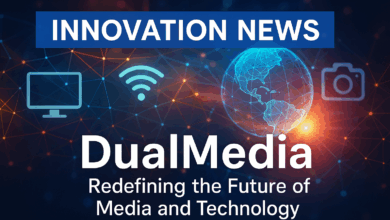When Inspiration Meets Cutting-Edge Technology

Redefining Creativity Through Technology
Technology amplifies human creativity, enabling visionaries to push boundaries once thought insurmountable. In architecture, for example, tools like artificial intelligence, virtual tours software and parametric design have unlocked entirely new ways to conceptualize structures. Virtual reality in architecture allows professionals to bring designs to life before the first brick is laid, creating immersive experiences that reveal how spaces will feel and function in real-time.
The ability to model and visualize ideas with precision accelerates the design process and fosters collaboration between architects, engineers, and clients. Inspiration flows seamlessly when technological tools streamline complex calculations and enable the exploration of bold ideas without the risk of costly missteps.
Revolutionizing the Real Estate Landscape
Real estate, traditionally reliant on physical tours and printed brochures, has undergone a remarkable transformation through technology. Interactive platforms and 3D visualization tools now allow potential buyers to explore properties remotely, experiencing them as if walking through the space. This trend is particularly prominent in competitive markets such as real estate in Dubai, where technology has become a vital differentiator.
In regions where architectural ambition is boundless, technological advancements have enhanced property development and marketing. Augmented reality enables realtors to overlay designs onto physical spaces, giving buyers a glimpse of future possibilities. These innovations not only attract investors but also set a precedent for what modern real estate should offer: convenience, transparency, and creativity.
Artistic Endeavors Enhanced by Machines
Art and design are no strangers to technological evolution. Digital tools now allow artists to craft experiences that blend the physical and virtual worlds. Generative design algorithms, for instance, are enabling artists and designers to co-create with machines, producing works of art that were once unimaginable. The interplay between human intuition and machine precision results in a dynamic creative process.
In architecture, this intersection is particularly transformative. Tools powered by AI development company analyze data and offer optimized solutions, creating designs that are both functional and aesthetically striking. By removing mundane tasks, architects can focus on the artistic and visionary aspects of their craft.
One of the most exciting areas where inspiration meets technology is the growing influence of smart cities. Urban planners are leveraging innovations such as IoT (Internet of Things), AI-driven analytics, and blockchain to design cities that are not only efficient but also sustainable. This movement prioritizes the needs of citizens while minimizing environmental impact.
The concept of “smart urbanism” thrives on data—real-time information gathered from sensors and analyzed to optimize resources like energy and transportation. By blending creativity and cutting-edge technology, planners can transform sprawling urban areas into hubs of innovation that prioritize well-being.
The Role of Artificial Intelligence in Decision-Making
Artificial intelligence plays a pivotal role in transforming inspiration into actionable results. AI’s capacity to analyze patterns, predict outcomes, and provide data-driven recommendations has streamlined countless industries. In sectors like construction, AI minimizes inefficiencies and mitigates risks by simulating various scenarios.
Furthermore, AI’s capacity for personalized solutions has reshaped consumer experiences. From tailored marketing campaigns to custom-built home designs, the potential for creating unique solutions continues to grow. The integration of AI in various industries has become an essential component of progress, fostering innovation in ways that were unimaginable just a decade ago.
Immersive Experiences: The New Reality
Virtual and augmented reality technologies have become indispensable tools in creating immersive experiences. Whether it’s walking through a digital replica of a home or exploring a conceptual design of a skyscraper, these tools bridge the gap between imagination and reality. Virtual reality in architecture is no longer a novelty—it’s a necessity in a world that demands precision and immediacy.
Similarly, the use of augmented reality and 3d virtual tours for real estate has proven transformative. These tools allow developers to present their vision to stakeholders, ensuring every detail is understood. Buyers can experience properties without geographical constraints, which is especially valuable in a globalized world.
The Ethical Dimension of Innovation
While technological advancements offer unparalleled opportunities, they also pose ethical questions. As industries become increasingly reliant on automation, concerns about data security, job displacement, and accessibility arise. Striking a balance between innovation and ethical responsibility is crucial.
While AI-driven tools optimize processes there’s a growing need to ensure they don’t perpetuate bias or exclude marginalized groups. The fusion of inspiration and technology must be inclusive, addressing the needs of diverse populations and ensuring equitable access to benefits.
Education as a Catalyst for Future Innovation
The integration of cutting-edge technology into education is pivotal for sustaining innovation. Educational institutions worldwide are adopting immersive technologies to revolutionize learning. Students can now participate in virtual simulations that enhance their understanding of complex concepts.
Such tools not only inspire the next generation of innovators but also equip them with the skills needed to navigate a tech-driven world. Encouraging creative problem-solving and technological fluency ensures that future leaders are prepared to tackle challenges with ingenuity and adaptability.
Conclusion
The partnership between inspiration and technology shows no signs of slowing down. As advancements in AI, robotics, and immersive media continue to evolve, their applications will extend to every corner of human endeavor. Real estate in Dubai, for instance, demonstrates how technological integration has redefined an industry, setting a benchmark for others to follow.
We can expect to see even more collaborative approaches to problem-solving, where human creativity is amplified by intelligent systems. From smart homes that adapt to their inhabitants’ needs to cities designed for environmental sustainability, the potential for innovation is limitless.
The interplay of inspiration and cutting-edge technology is reshaping the modern world, offering solutions that were once confined to the realm of imagination. With every breakthrough, humanity takes a step closer to a future where creativity and technology harmoniously coexist, unlocking possibilities we are only beginning to explore.



